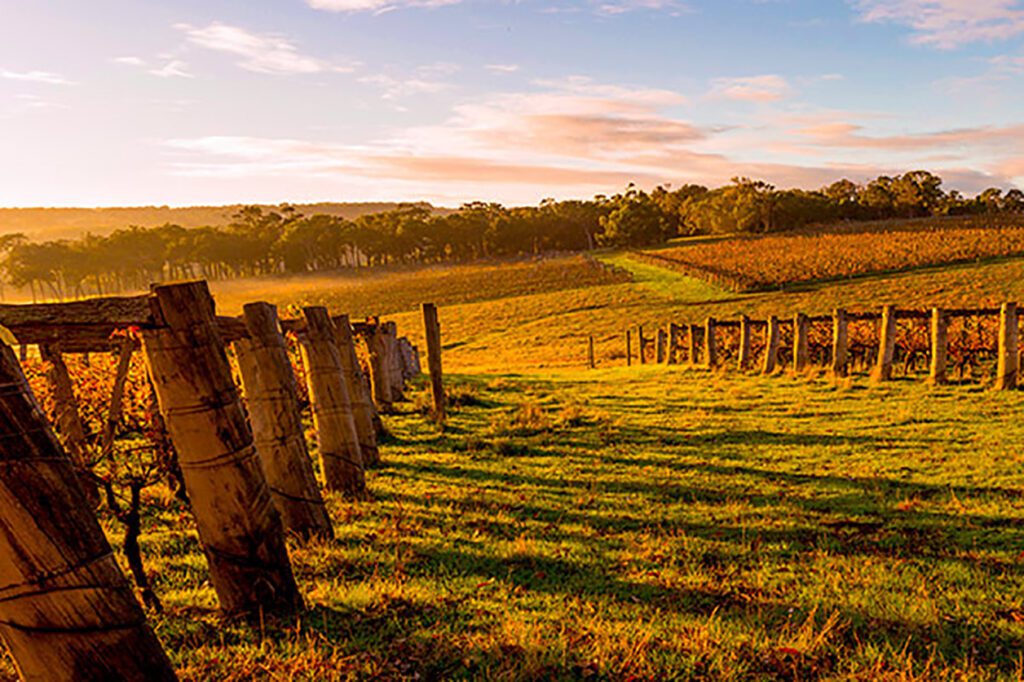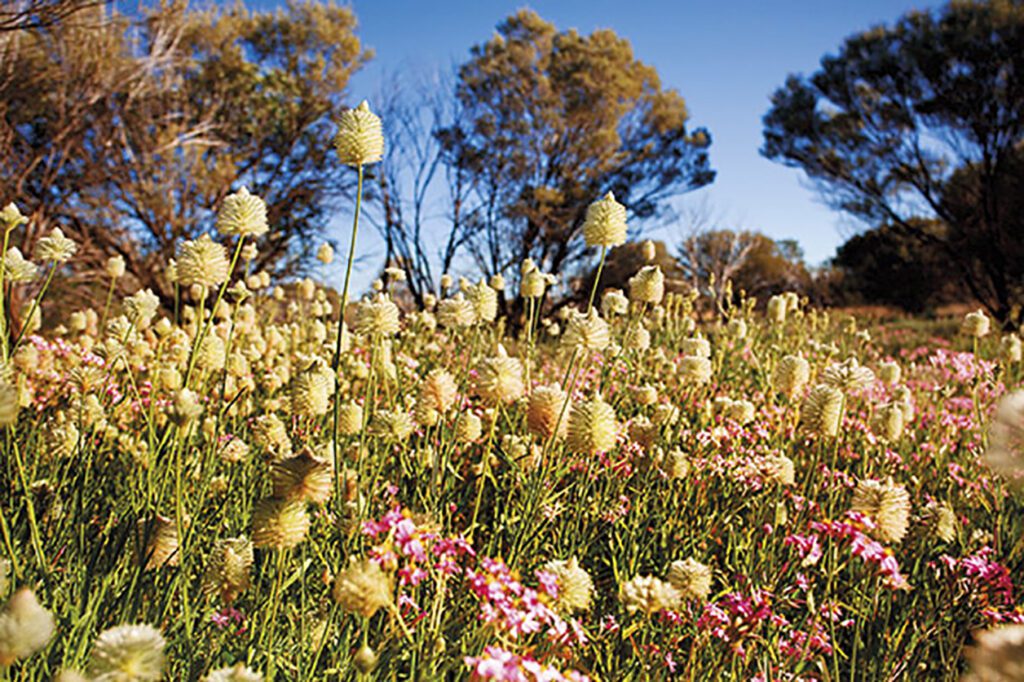The big and beautiful state of Western Australia is renowned for its breathtaking beaches, widespread wineries, and expansive outback. It’s also home to the largest wildflower collection on Earth, boasting more than 12,000 precious species – 60 percent of which can only be found in Western Australia.
These vibrant, natural beauties bloom anywhere from the outback plains of the Pilbara to the laid-back capital city Perth, and are a must-see for any travellers heading to the West Coast of Australia.
If you want to immerse yourself in the wonder of Australian wildflowers, we’ve created a comprehensive guide to help you with all things flowers.
The best time to visit Perth for wildflowers:
Wildflower season WA runs for six months, so there’s plenty of time to enjoy it. The flowers begin blossoming in June in the north of the state: the sprawling plains of the Pilbara, Goldfields and Coral Coast are the first to be transformed into a wildflower wonderland.
It then sweeps south to Perth’s world-famous botanical gardens and national parks and finishes up on the incredible coastal heaths of South West WA in November.
Flower aficionados suggest visiting Perth between September and November to experience the wildflowers at their most spectacular. The weather during this time is also the most comfortable: warm and sunny with little rainfall.
The best place to see wildflowers in Western Australia:
There are a throng of fantastic, flower-filled places in Western Australia and it’s impossible to list them all. So, we’ve picked our Top 5 Wildflower Hotspots instead:
The Mid West Region:
The best wildflowers WA has to offer can be found in the Mid West region, where the phenomenal floral displays stretch as far as the horizon.
From late July to September, the rolling landscape is covered in a colourful carpet of wildflowers – the fields awash in spectacular shades of white, pink and blue.
The Mid West is about a six-hour drive from Perth. You can take a self-drive trip and travel at your own pace, or take one of the many wildflower coach tours operating in the area and soak in the flower-plenty views while someone else does the driving.
Look out for: To get some excellent views of everlastings be sure to visit the towns of Mullewa, Mingenew, Perenjori and/or Wubin.
Take a trip to Geraldton or Greenough to see the best bright-coloured banksias and grevilleas. Starflowers, kangaroo paws, feather flowers, smoke-bushes and eucalypts are also widespread in this area.


The Margaret River Region:
The Boranup Drive, in the Leeuwin-Naturaliste National Park, is the heart of the Margaret River Region and one of nature’s great wonders.
It’s best to do the drive in spring, when the wildflowers flourish and tangle together among the towering trees. Stop at Boranup Lookout to enjoy a panoramic view of the surrounding forest – the flowers and trees finding perfect harmony.
The Margaret River region is only a three-hour drive from Perth, which makes it an achievable day trip. However, if you’d like to stay overnight in the area, there’s a superb camp site that was converted from an old timber yard just south of Boranup Drive in Hamelin Bay.
Look out for: If you’re feeling a little fed up with flowers, the Margaret River region is renowned for its wineries – sip on a glass or red and recharge.


Noble Falls:
A 30-minute drive inland from Perth, just outside the quaint country town of Gidegegannup, you’ll a tranquil waterfall oasis: Noble Falls.
Here, you’ll find some of the rarest kinds of wildflower Perth has to offer, including species that are found nowhere else on Earth. You can enjoy a free barbecue at the falls, a nature walk, or just bask in the natural beauty.
Look out for: From August through to October, the Noble Falls area boasts rich blue Leschenaultia, bright-yellow wattles, magnificent orchids, Hakeas and Grevilleas as well as rose coneflowers, cone bushes, triggerplants and Verticordias. This flora-filled paradise is definitely worth a visit.
Kings Park:
Explore one of Perth’s most popular tourist attractions and take a Free Guided Walk through the beautiful Botanic Garden.
The wildflower display between July and October is truly remarkable, guests are afforded an opportunity to not only view the unique flora of Western Australia but learn about it too – specifically its resilience across such diverse environments.
The Free Guided Walk starts at the Kings Park Information Centre at 10am or 2pm every day of the week. The Park is a short five-minute drive from the city, and is also linked on the free city bus service.
Look out for: The magnificent panoramic view of Perth city and the Swan River.


At 15 metres, Wave Rock is one of Australia’s biggest waves, but it’s also the furthest from any ocean. The 110-metre long, multi-coloured granite cliff is shaped like an enormous wave about to crash into the outback and it’s certainly something to behold.
But after the winter rains, this spectacular site gets even more spectacular when it’s surrounded by a sea of dazzling colour as the Western Australian wildflowers bloom in their billions.
Wave Rock is located near the Wheatbelt town of Hyden, about a four-hour drive from Perth, and there’s plenty to see beyond the big wave: there’s also a Wildlife Park where you can meet koalas and white kangaroos and a Wildflower Shop/Café that offers souvenirs and refreshments.
Look out for: The nearby collection of more than 450 ancient rock paintings in Mulka’s Cave which tell the story of a local Aboriginal legend.
The best way to explore wildflowers:
While wandering through the wonderful wildflowers, take nothing but pictures. You may be tempted to pick a pretty souvenir but removing the wildflowers is illegal and can attract a $2000 fine which is not so pretty.
If you suffer from hay fever or allergies, don’t forget to take some antihistamines, as advised by your doctor, otherwise it can turn into a sneeze-filled escapade. Wear plenty of sunscreen, a hat and comfy walking shoes, and don’t forget to drink lots of water.
Protect canola crops and stop the spread of disease by staying out of canola fields – the yellow flowers and signature scent make the crops easy to spot and avoid.


We hope you enjoyed our guide, and take some time out to smell the roses, or wildflowers!

